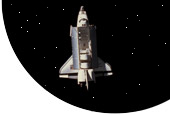Loading |
 |
|
||||||||||||||||||||||||||||||||||||||||||
|
SUBJECT: Space Policy, Programs, and Operations STATEMENT OF: MR. KEITH R. HALL MARCH 8, 2000 IntroductionI am pleased to be here today to discuss my vision for space and I applaud your continued interest in this highly important arena. As both the Assistant Secretary of the Air Force (Space) and the Director of the National Reconnaissance Office (NRO), I am in a unique, dual-hatted role. As Director, NRO, I have responsibility for the design, acquisition, and operations of all the nation's reconnaissance satellites, reporting to the Secretary of Defense and the Director of Central Intelligence. As you know, in my Air Force role I have responsibility for policy and interagency coordination as well as advising the Secretary and Chief of Staff of the Air Force on space matters. Acquisition and operation of space capabilities are the responsibility of the Assistant Secretary for Acquisition and Air Force Space Command, respectively. In this role I have the opportunity to leverage good ideas from both the Air Force and the NRO as well as facilitate exchanges and partnerships where they make the most sense.Today I will address both areas of my responsibility, though most of the information concerning the NRO is highly classified and must be covered in closed session. Within the context of the Air Force vision for space, I intend to highlight a number of important programs and concepts. These include the numerous partnerships with other space sectors and organizations, some of the most important space-related investments I foresee, and a number of the challenges the Air Force and the nation face with respect to maintaining dominance in space. With regard to the NRO, I will highlight some initiatives and unique partnerships in the areas of operations, acquisitions, and research and development. I should note that this year, I look forward to working with two Congressionally chartered commissions. Your committee created the Commission to examine, among many other things, the relationships between "white and black" space. The second commission, I'll call the "NRO Commission," is charted to review the NRO's current organization and practices. I am eager to work with both commissions to explore ways our future programs can better meet national security needs. Criticality of U.S. Space CapabilitiesAs highlighted again in Kosovo operations, U.S. space capabilities are an indispensable tool of global leadership. They allow our political leaders to base decisions on remarkably timely, detailed, and accurate information. Space systems enable our military leaders to achieve dominant battlefield awareness by providing global communications, precision navigation, accurate meteorological data, early warning of missile launches, and near-real time signals and imagery intelligence support. The global presence of space systems makes it possible for the U.S. to more effectively respond to the wide range of threats presented by the post-Cold War world.For example, during Operation Allied Force, the Air Force proved many lessons. Among them, "Reachback" was a particular success story. Relying on satellite communications, warfighters were able to reach back to the United States for real-time information and analysis (some of that space based, as well), while avoiding the need to deploy in-theater systems. Additionally the use of precision weapons was enabled by use of the space based Global Positioning System. Today, U.S. forces rely on space systems for global awareness of threats, swift orchestration of military operations, and precision use of smart weapons. As we move into the new millennium, one of the key goals of military space power will be the employment of appropriate Intelligence, Surveillance, and Reconnaissance (ISR) sensors. Aerospace power requires ISR assets in space and in the air that are interoperable and that can communicate information back to centers where data can be fused and commanders can use that fused information to command their forces and the battlespace. The constant requirement for data, communications, and systems that turn data into information, in turn, requires capabilities that run the gamut from prediction of solar weather to satellite command and control to computer network defense. In addition to a robust ISR capability, I foresee a time in the not-too-distant future when other military functions will be carried out in, through, and from space. The employment of these military capabilities in space, when combined with global communications and high speed information processing, will facilitate the delivery of precise military firepower anywhere in the world, day or night, in all weather. Our goal is to find, fix, track, and target anything of significance worldwide and to ensure targets are engaged by the most appropriate means available. This capability will allow the U.S. to maintain a non-intrusive global presence and deliver precision weapons on target to maximize combat power while minimizing collateral damage. |
home | profile | articles | books | lectures | jim speaks | humor
links | email
Copyright 2010 James Oberg. All Rights Reserved
Site Designed and Maintained by YoeYo.com
